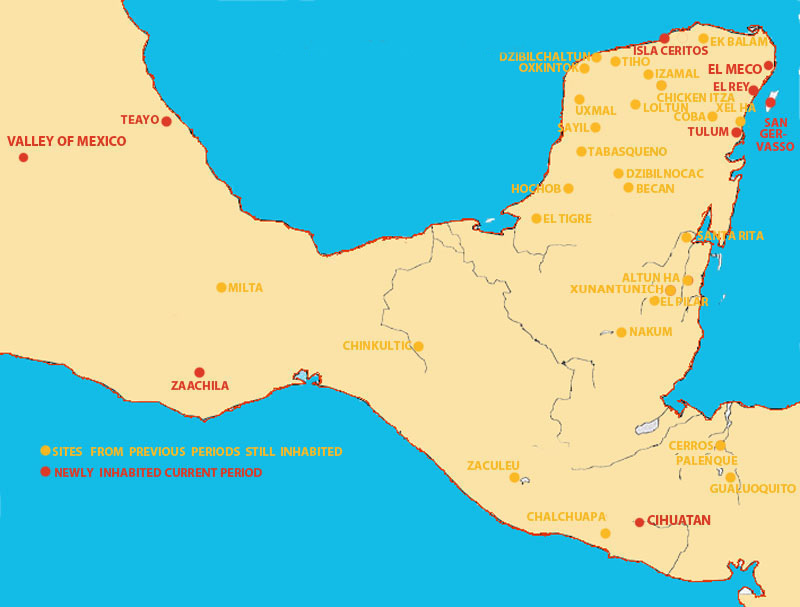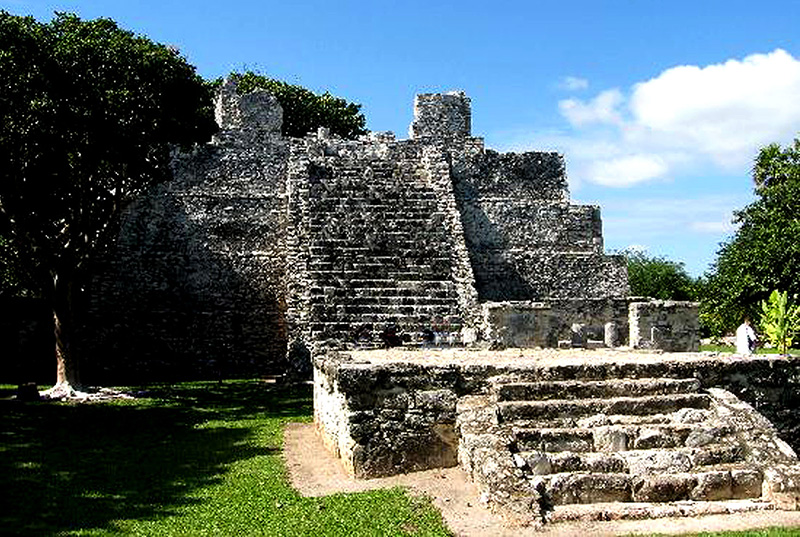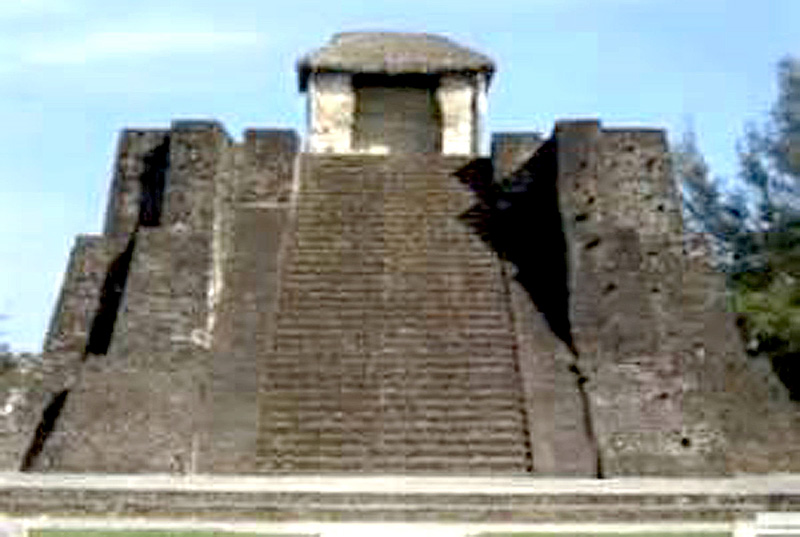Terminal Classic
900 C.E - 1200 C.E.
Overcrowding, famine, climate change, deforestation, and major geologic catastrophes during this period all contributed to the migration from the large late classic centers. Also the internal civil war from central mexico drained the strength of the civilzation.

The overwhelming desire of ancient Mexicans to possess exotic merchandise is attested to by Mayan ruins on Isla Cerritos, an island only 650 feet in diameter, off the north coast of the Yucatan Peninsula,
Learn More
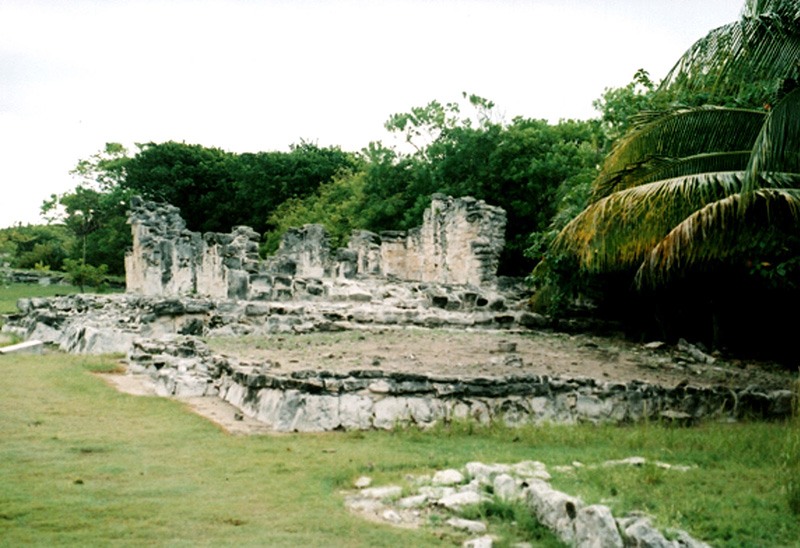
El Rey is a small site located in Cancún. It is also known as the Kinich Ahau Group, the king of the Sun's Face, after a carved stone human head found there.
Learn More
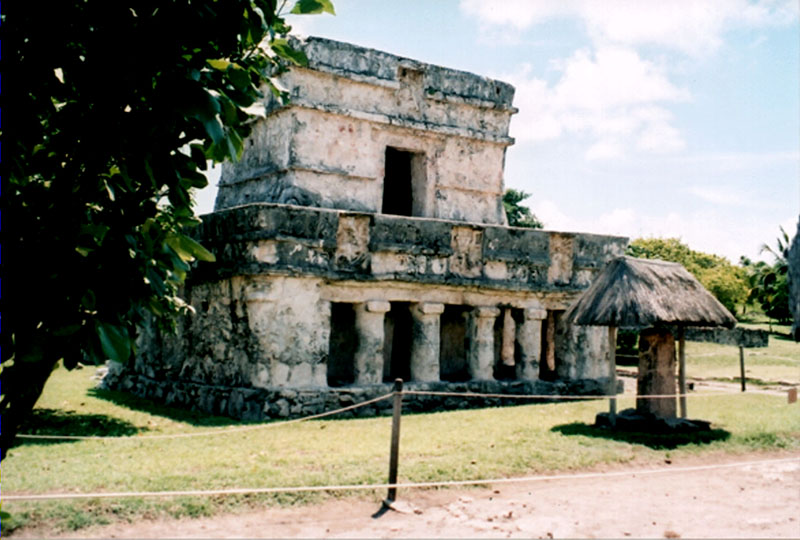
Tulum in Mayan refers to its fortress like walls, but the real Mayan name for the site was "Zama" which means dawn. The site is located an easy drive down the coast from Playa del Carmen and is also easily accessible from Valladolid via Cobá.
Learn More
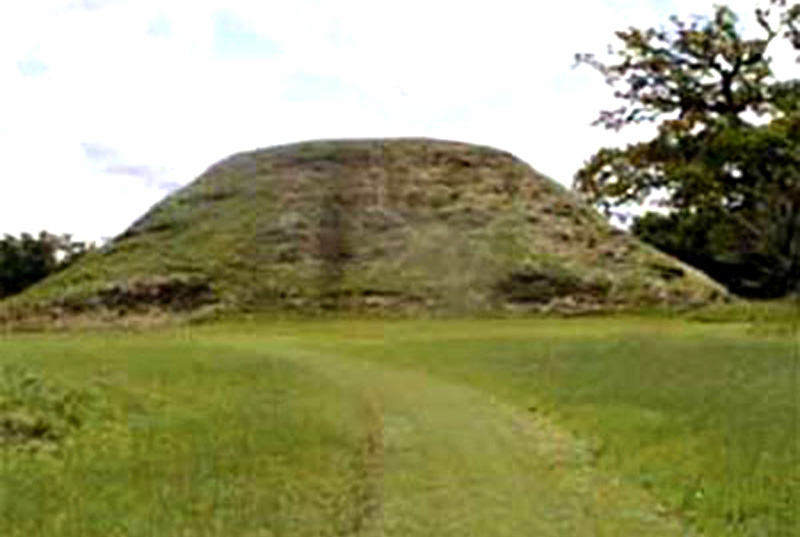
Cihuatan is the greatest known site within the country, and only the truely urban one in El Salvador, and includes 2.5 km of continuous constructions, a nucleus of great civic and religious constructions surrounded by a compact complex of domestic architecture.
Learn More
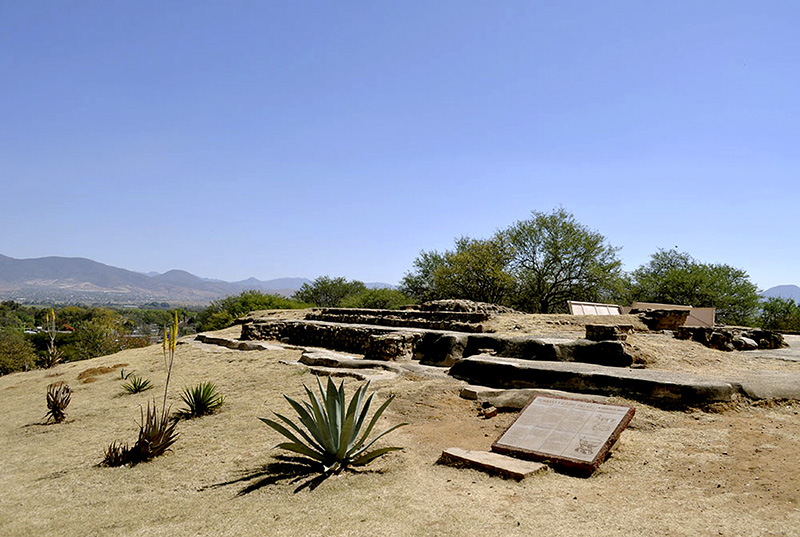
Zaachila was the last of the Zapotec capital following the fall of Monte Alban. The site flourished from 1100-1521 C.E.. Toward the end, Zaachila was conquered by Mixtecs, who occupied it until the arrival of the Spanish conquistadors.
Learn More

